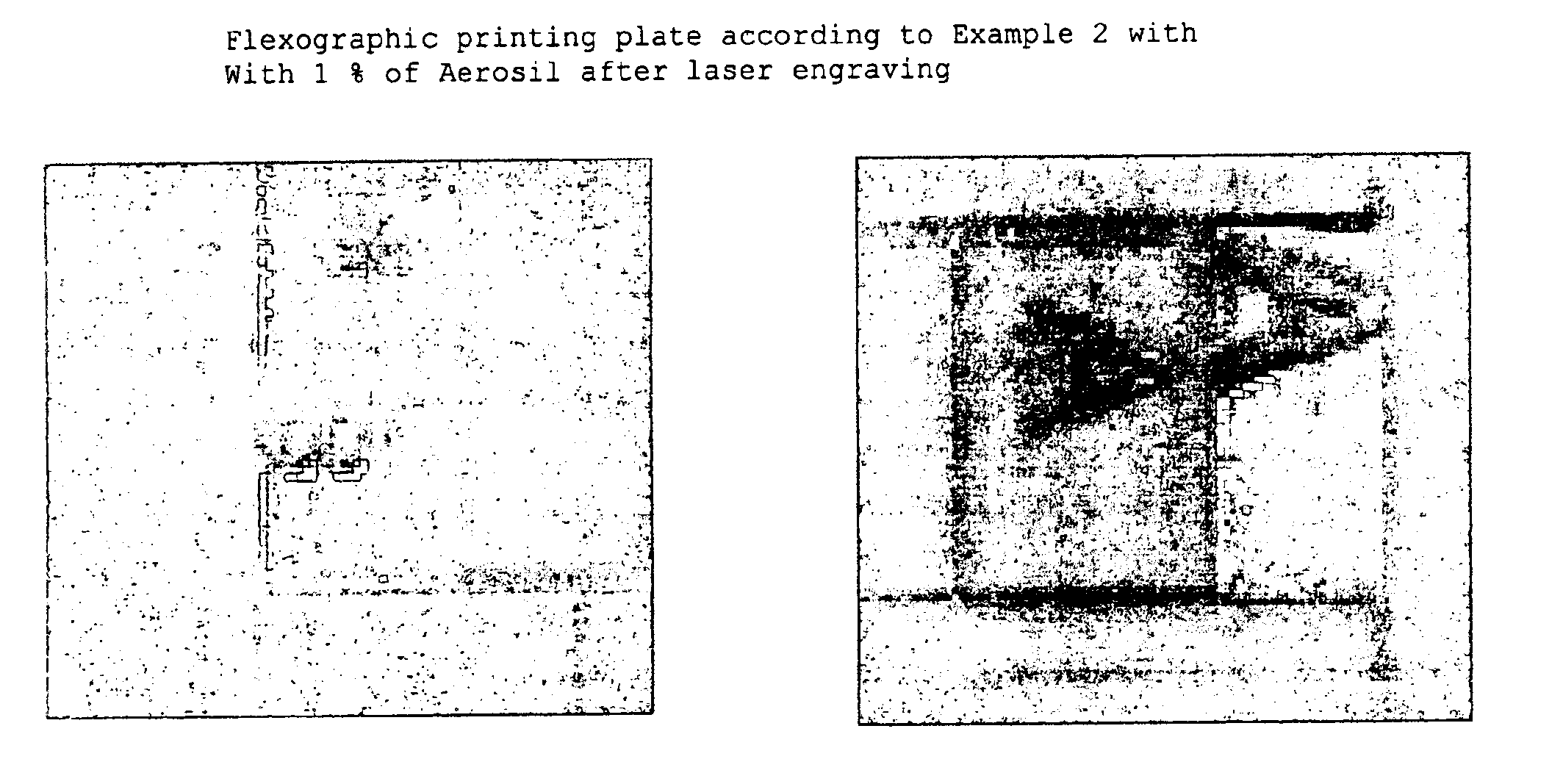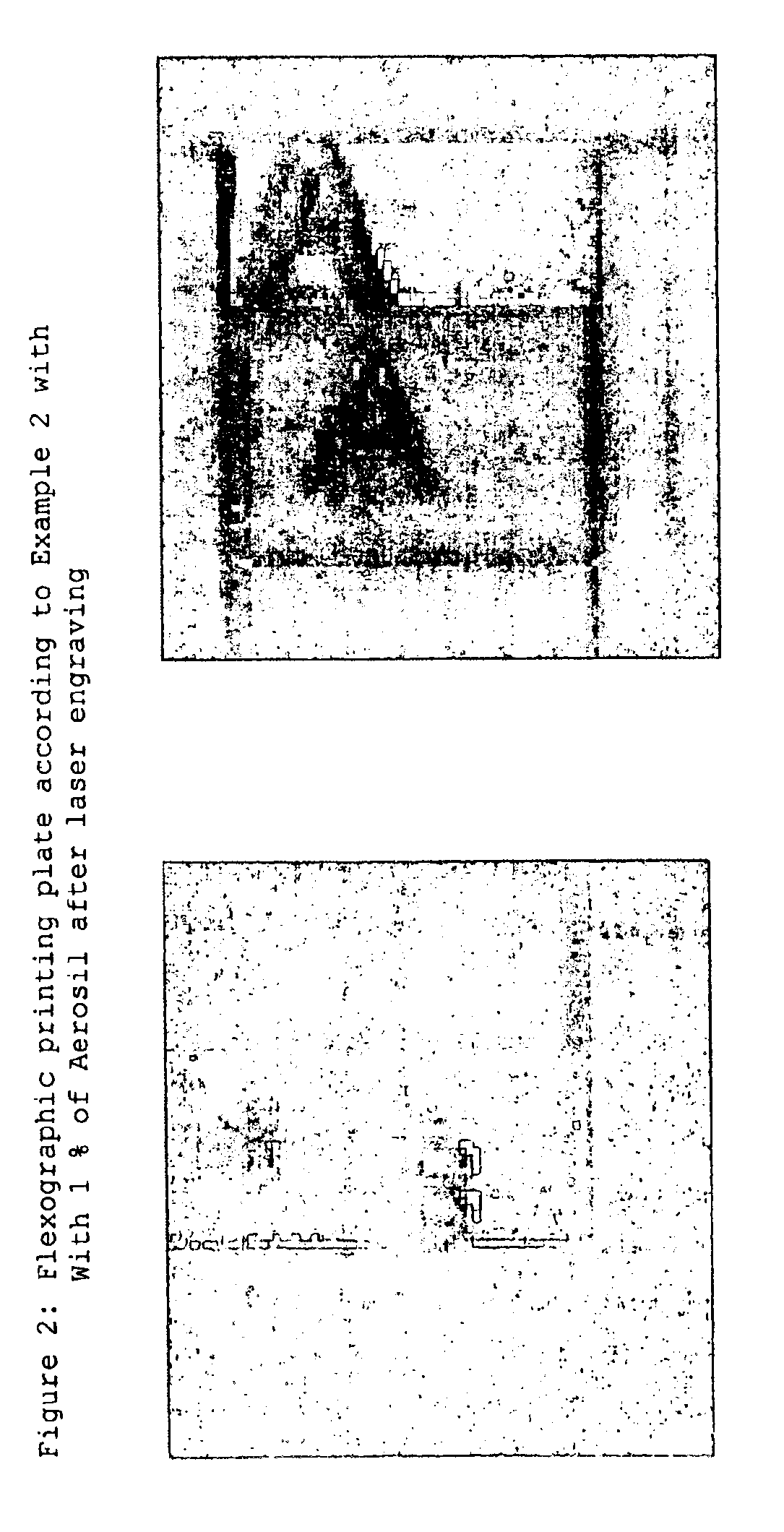Method for producing flexographic printing plates by means of laser engraving
a technology of laser engraving and printing plate, applied in the field of process for the production of flexographic printing plate, to achieve the effect of high resolution
- Summary
- Abstract
- Description
- Claims
- Application Information
AI Technical Summary
Benefits of technology
Problems solved by technology
Method used
Image
Examples
example 1
[0059]The procedure was as in the comparative example, but 1% by weight (based on the sum of all components of the layer) of a finely divided pyrogenic silicon dioxide having a specific surface area of 160 m2 / g and a mean primary particle size of from 10 to 20 nm (AEROSIL® R 8200, Degussa) was added as filler during production of the flexographic printing element.
[0060]The experimental results are shown in Table 1. FIG. 2 shows a photomicrograph of the resultant test motif.
examples 2-3
[0061]The procedure was as in the comparative example, but the amounts of silicon dioxide stated in Table 1 were added as filler during production of the flexographic printing element. The experimental results are shown in Table 1.
[0062]The engraving results obtained show that the addition according to the invention of only 1% of filler already resulted in a drastic improvement in resolution. While in the case of the plate without filler lines at a separation of 20 μm can no longer be resolved at all and instead coincide to form a single line, the two lines can be resolved in the presence of 1% of SiO2.
[0063]The figures show that the edges of the positive elements shown are significantly sharper if the filler is present. Without filler, dark melt droplets are evident at the edges, which are not present in the case of the plates filled in accordance with the invention.
[0064]The negative element can also be seen significantly better in the case of the filled plate.
[0065]
TABLE 1Results...
PUM
| Property | Measurement | Unit |
|---|---|---|
| Percent by mass | aaaaa | aaaaa |
| Particle size | aaaaa | aaaaa |
| Particle size | aaaaa | aaaaa |
Abstract
Description
Claims
Application Information
 Login to View More
Login to View More - R&D
- Intellectual Property
- Life Sciences
- Materials
- Tech Scout
- Unparalleled Data Quality
- Higher Quality Content
- 60% Fewer Hallucinations
Browse by: Latest US Patents, China's latest patents, Technical Efficacy Thesaurus, Application Domain, Technology Topic, Popular Technical Reports.
© 2025 PatSnap. All rights reserved.Legal|Privacy policy|Modern Slavery Act Transparency Statement|Sitemap|About US| Contact US: help@patsnap.com



